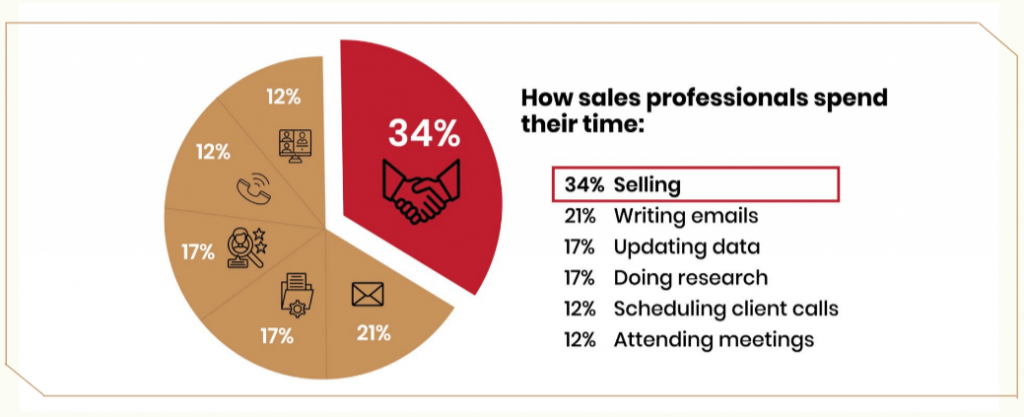It is commonplace for CIOs to draw inspiration and ideas from more experienced peers. However, there are many things a seasoned CIO can learn from start-up culture that can be implemented in their own organization and leadership style. In a recent virtual insights presentation, we heard from Hylke Sprangers on Things Enterprise CIOs Can Learn From Start-Ups About Innovation And Disruption. We cover 10 key takeaways from his presentation in this article.
1. Integrate four dynamic capabilities to manage change and disruption
Sprangers identifies four important capabilities to futureproof companies to benefit from change and disruption:
- Resilience
- Adaptability
- Foresight
- Creativity
“I think creativity is underestimated nowadays because there is a lot of focus on analytical capabilities.” However, each of the four capabilities has its unique function in the futureproofing landscape. “For unknown unknowns, you need to either be resilient or adaptable in your business models and operations as you don’t know what’s going to happen,” Sprangers adds. He mentions COVID-19 as the most recent Black Swan event to impact the business world.
When it comes to adaptive innovation, foresight, and creativity are much more important. “This is what we call dynamic capabilities, as opposed to operational capabilities needed in your industry or company to run your business,” Sprangers says.
2. Predict trends all year round
“When talking about dynamic capabilities, it’s about the way we see what’s going on.” Here’s how Sprangers categorizes emerging trends. Instead of searching for new trends every year, he distinguishes categories and keeps track of those trends year after year. The trend categories are:
- Trusted Tech: e.g., Cybersecurity, Data Privacy & Sovereignty
- Sustainable Tech: e.g., Climate Action, Sustainable Cities
- Smart Tech: e.g., Smart Devices, Smart Cities
- Immersive Tech: e.g., the Metaverse, Experience Economy
- Decentral Tech: e.g., Hyperautomation, Anything-as-a-Service
- Autonomous Tech: e.g., Autonomous Vehicles
- Human Tech: e.g., Bionics and Prosthetics
“I encourage all leaders to do some strategic foresight based on these kinds of trends and maps,” Sprangers advises.
3. Get inspired by entrepreneurial leadership
Sprangers defines entrepreneurial leadership as “leadership to empower people to sense and seize opportunities.” He added that it’s always about value creation to benefit society as a whole and not only about profit. There are two modes of entrepreneurial leadership when it comes to start-ups or scale-ups.
Sprangers refers to the two modes introduced by Andreessen Horowitz, a famous VC in Silicon Valley:
- Sensing: Search Mode (Looking for opportunities and finding a market fit)
- Seizing: Hill-Climbing Mode (Executing and exploiting those opportunities)
4. Be aware of qualities that distinguish entrepreneurs
Out of the 15 leadership principles introduced by Amazon, Sprangers listed the following qualities to distinguish entrepreneurs:
- Learn and be curious
- Customer obsession
- Think big
- Ownership
- Have a backbone, disagree, and commit
Based on a study by Timothy Butler where almost 6,000 entrepreneurs and general managers were interviewed, Sprangers refers to three factors that distinguished entrepreneurs:
- Thriving in uncertainty: “Are you curious? Are you comfortable with risk? Are you focused on learning? Are you focused on opportunity-seeking?”
- Passion for ownership: “Entrepreneurs are driven by a need to own products, projects, or initiatives to have control over the finished product.”
- Skilled in persuasion: Entrepreneurs are natural salespeople who communicate their vision effectively to team members and clients.
5. Ask the right questions when hiring entrepreneurial leaders
Sprangers gives examples of interview questions to ask when hiring entrepreneurs based on the three factors distinguishing entrepreneurs.
Thriving in uncertainty:
- Which is more valuable: imagination or analysis? Why?
- We decided to launch this product. How could we have done it differently?
Passion for ownership:
- How much of who you are is what you do at work?
- Which is a better attitude for a business leader: passion or professionalism?
Skilled in persuasion:
- How does persuading a group of executive peers differ from selling to a customer?
- Could you describe an experience when it was important that you changed the opinions of others?
6. Utilize the emergent strategy when it comes to innovation
Peter Drucker famously said, “culture eats strategy for breakfast.” “What he meant was that culture is more important than strategy for a company,” Sprangers explains.
“And you could also say strategy eats innovation for breakfast.”
“When you look at innovation, you need to have a strategy on how to differentiate in a world with structural volatility, uncertainty, complexity, and ambiguity. You continuously must innovate.”
Sprangers explained two strategies for continuous innovation:
- Deliberate strategy: A traditional leadership-driven approach. “Leaders will ask, ‘What kind of company do we want to be in the future and how do we get there?’ It’s foresight and planning, and then action. You create a vision and then execute that vision.”
- Emergent strategy: The customer is placed at the center of the strategy, and leaders will experiment based on what the customer wants. Based on the action, a strategy is formed. “Silicon Valley companies and start-ups utilize the emergent strategy. They first define a bold vision and end goal. Based on a bottom-up and agile cycle, they constantly experiment on how to get there by putting out projects, products, and new features.”
7. Adopt elements of blitzscaling
Sprangers refers to Reid Hoffman, the co-founder of LinkedIn, for bringing the concept of blitzscaling to the mainstream. “Blitzscaling is the science and art of rapidly building out a company to serve global markets. When start-ups scale fast, we call that blitzscaling.”
The four dimensions of blitzscaling are:
- Growing your revenues: “Start-ups that need to grow rapidly need to look at their revenues.”
- Growing your customer base: “Often start-ups first look at their customer base, and only then look at their financial performance.”
- Growing your organization: “Many start-ups fail because their organization cannot cope with the large growth.”
- Growing your technology: “Your technology has to scale as well when you have millions of online users.”
8. Approach decision-making with intuition
How do start-ups deal with fast growth and execution? What is their decision-making process?
“We are focused on data-driven decision making, which is actually very good and more objective. But don’t underestimate the gut feeling. Don’t underestimate intuition and emotion as they are large parts of good decision-making,” Sprangers says.
“Large corporations need to have a 50-50 balance of data-driven and gut feeling decision-making.”
He adds, “start-ups and scale-ups don’t use data-driven decision-making all the time. Of course, they do it when they test their products, but when it comes to hiring people or scaling the organization, they use heuristics.”
9. Recognize innovation killers
The answer lies in culture and the integration of new business models.
“It’s more about culture. It’s also important to look at existing business models vs. when you’re going to explore new business models. Because you always come to a certain point where new business model is going to clash with your old business model. You get a lot of restraint or feedback from the people who are still working with old business models. That’s something that you have to carefully look at,” Sprangers says.
He advises leaders to align the incentives of the people who are still working on old business models with those who are working on new business models.
10. Explore becoming an ambidextrous organization
An ambidextrous organization is an organization that is good at both operations and innovation.
“Operation is about exploiting your current business model and operations, and innovation is about exploring new innovations and exploring the two together,” Sprangers says.
He adds that there are several models for how to combine the two. “First, you have to distinguish between the fact that on the operational side, you are more focused on incremental innovation which accounts for 70% of your innovation efforts, and also of the failure that you get from it. On the innovation side, it’s more about new business models or new technology.”
“So, you’re talking more about disruptive innovation or radical innovation. For example, most companies split those two into separate entities, so they don’t combine it into one organizational entity.”
*The transcript has been edited for length and clarity.







